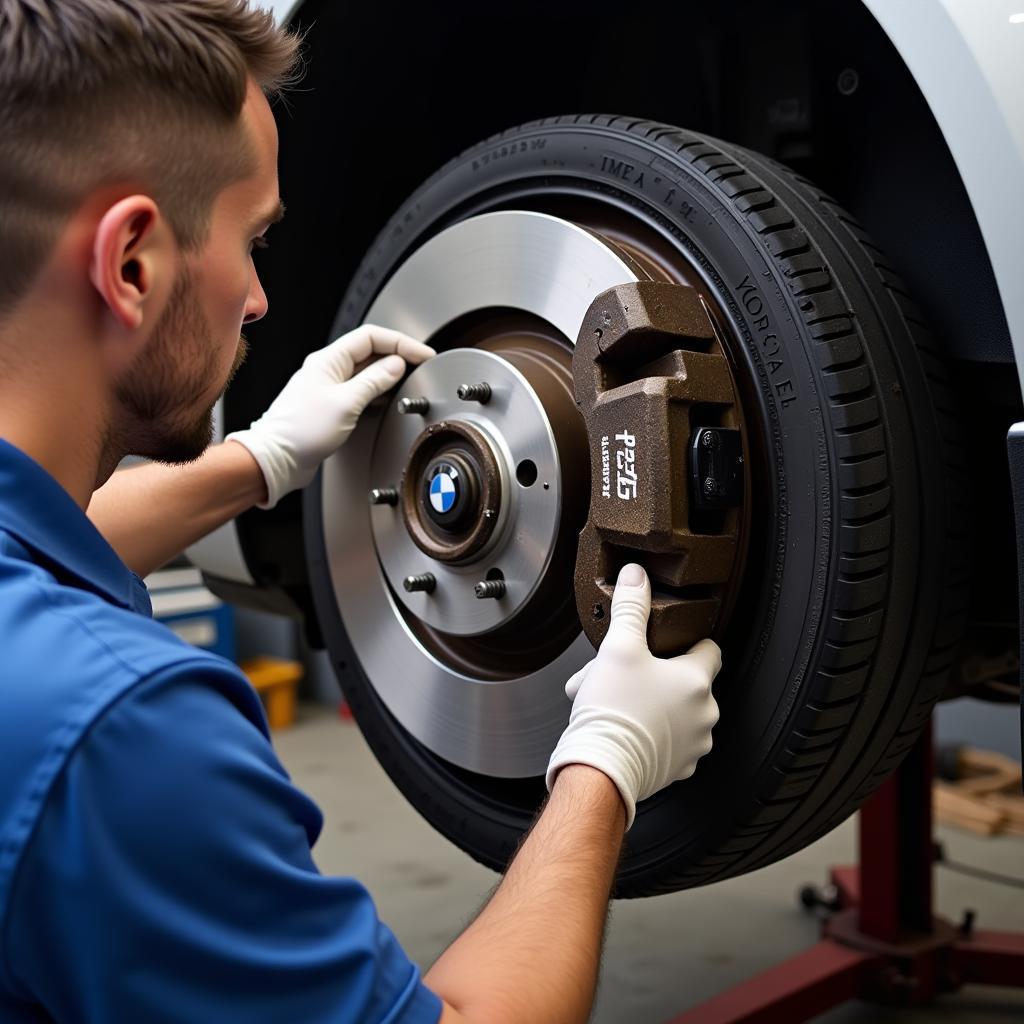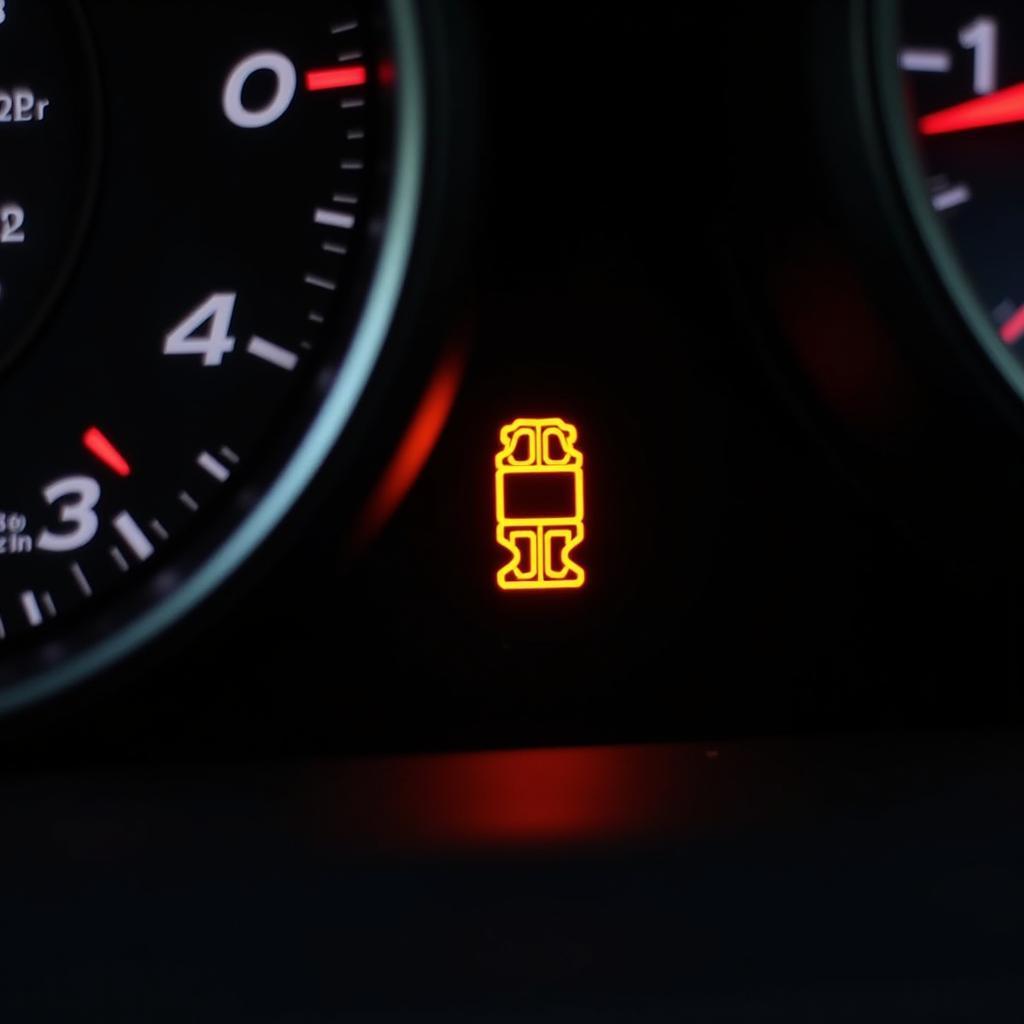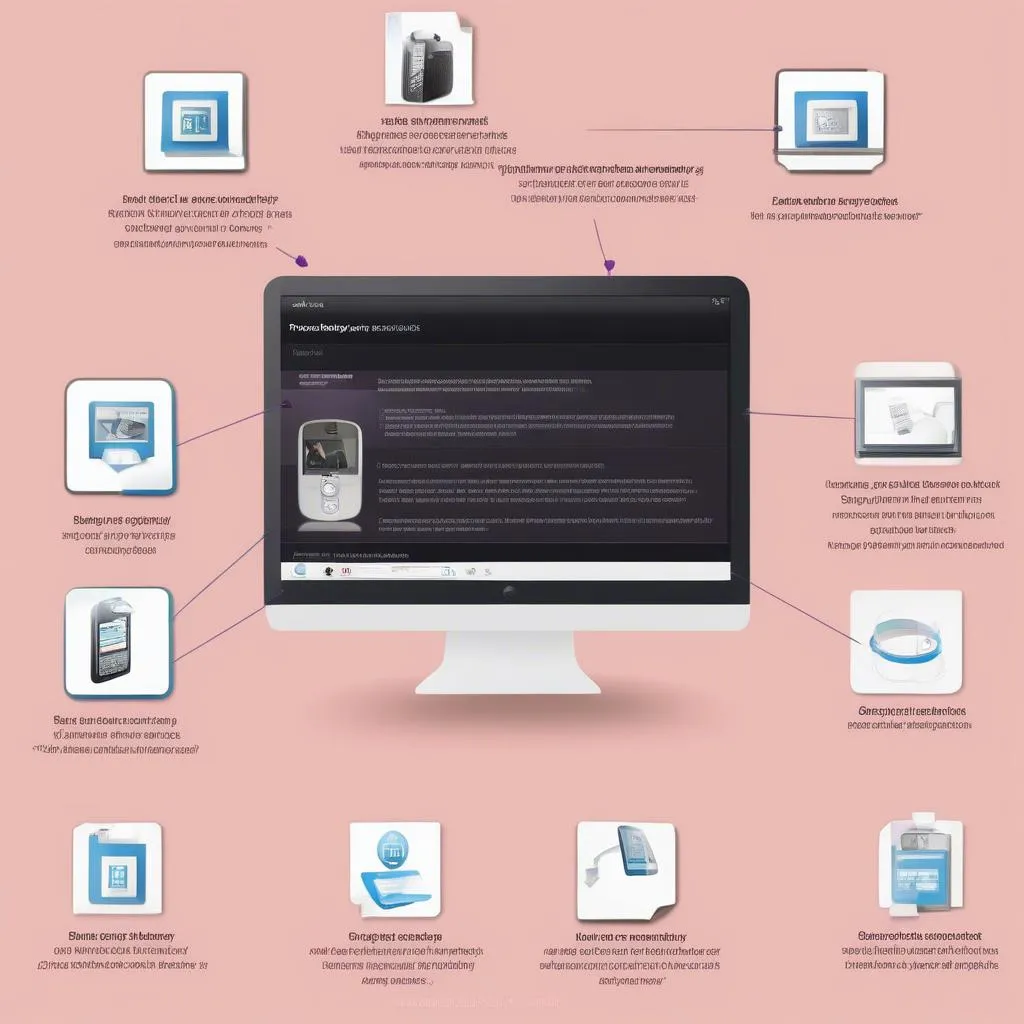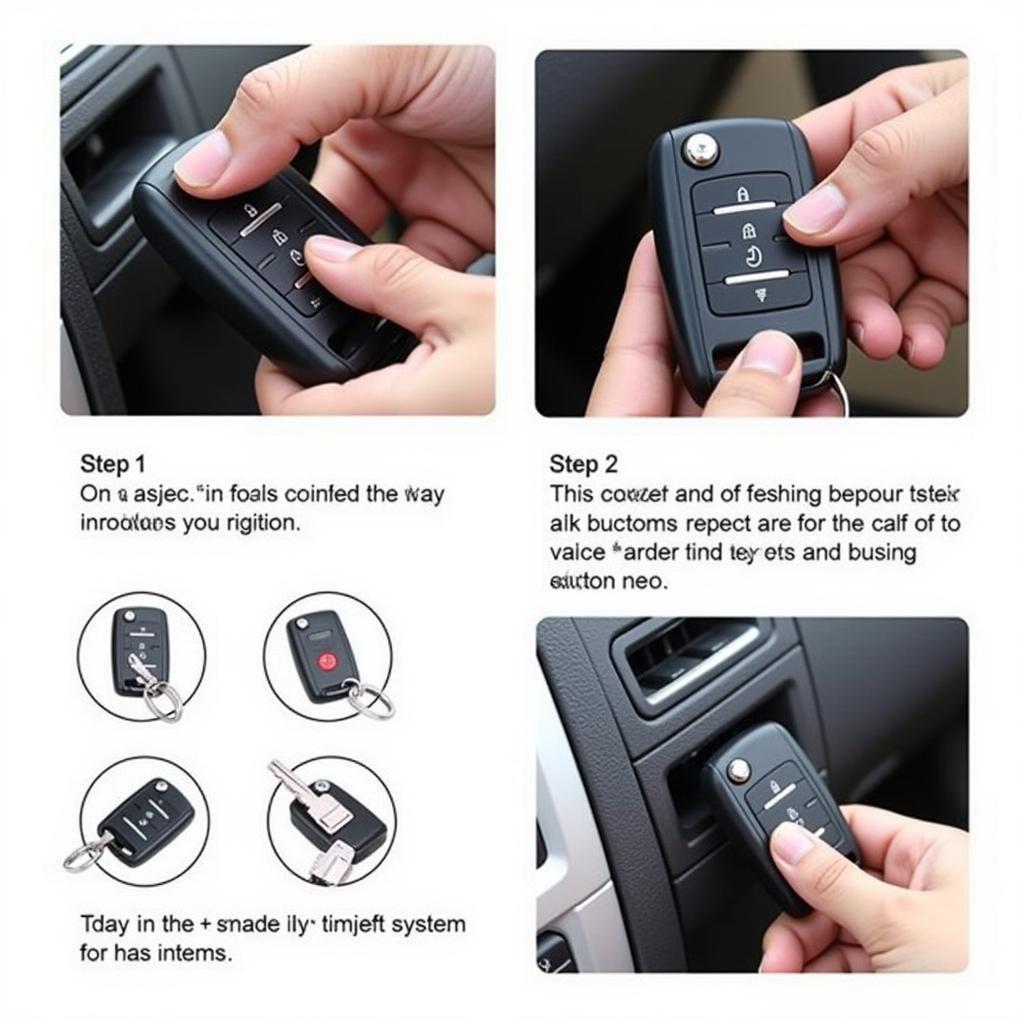The brake pad warning light on your BMW Z4 is a crucial safety feature that illuminates when the brake pads wear down to a certain point. Ignoring this warning can lead to costly repairs and compromise your safety on the road. This comprehensive guide will delve into the reasons behind the brake pad warning light on your BMW Z4 and provide step-by-step solutions to address the issue.
Understanding Your BMW Z4 Brake Pad Warning Light
The brake pad warning light, often depicted as a circle with dashed lines around it and parentheses on either side, typically illuminates in conjunction with the ABS or handbrake light. This illumination signifies that your brake pads have reached their minimum thickness and require replacement.
Modern BMW Z4 models are equipped with brake pad wear sensors, typically located on the inner brake pad of one of the front wheels. These sensors are integral to a circuit that triggers the warning light on your dashboard. When the brake pad wears down to a critical level, the sensor comes into contact with the brake rotor, completing the circuit and activating the warning light.
Common Causes of a BMW Z4 Brake Pad Warning Light
While worn brake pads are the most common culprit, other factors can trigger the brake pad warning light on your BMW Z4:
- Worn brake pad sensors: Like any other car component, brake pad sensors are prone to wear and tear. A faulty sensor may provide inaccurate readings, triggering the warning light prematurely.
- Damaged brake pad sensor wiring: The wiring connecting the brake pad sensor to the vehicle’s electrical system can become damaged due to corrosion, rodents, or general wear.
- Low brake fluid level: A drop in brake fluid level can also trigger the brake pad warning light. It’s crucial to check your brake fluid level and address any leaks immediately.
- Faulty ABS system: In some cases, a malfunctioning Anti-lock Braking System (ABS) can trigger the brake pad warning light. This situation necessitates a professional diagnosis to identify and rectify the issue.
Troubleshooting the BMW Z4 Brake Pad Warning Light
 Inspecting BMW Z4 Brake Pads
Inspecting BMW Z4 Brake Pads
Before assuming the worst, it’s advisable to perform a few checks:
- Visually inspect your brake pads: If you’re comfortable working on your car, you can visually check the thickness of your brake pads through the spaces between the wheel spokes. If the pad material is less than 1/4 inch thick, it’s time for a replacement.
- Check your brake fluid level: Locate the brake fluid reservoir under the hood and ensure the fluid level falls within the minimum and maximum markers.
- Consult your BMW Z4 owner’s manual: Your owner’s manual will provide specific information about your car’s brake system and any recommended maintenance schedules.
When to Seek Professional Help for Your BMW Z4
While a DIY approach can be helpful for minor troubleshooting, it’s crucial to seek professional assistance from a qualified mechanic if:
- You’re uncomfortable working on your vehicle’s braking system
- You’re unsure about interpreting the results of your inspection
- The brake pad warning light persists after replacing the brake pads
- You suspect a problem with the brake pad sensors, wiring, or ABS system
 Replacing BMW Z4 Brake Pads
Replacing BMW Z4 Brake Pads
BMW Z4 Brake Pad Replacement Cost
The cost of brake pad replacement for a BMW Z4 can vary based on factors like labor costs in your area and whether you choose OEM or aftermarket parts. On average, expect to pay between $300 and $500 for both front and rear brake pad replacements.
Preventive Maintenance: Extending the Life of Your BMW Z4 Brake Pads
- Adopt smooth braking habits: Avoid hard braking whenever possible. Gradual braking reduces wear and tear on your brake pads.
- Lighten your load: Carrying excessive weight in your BMW Z4 puts extra strain on your brakes. Travel light whenever you can.
- Adhere to your BMW Z4’s service schedule: Regular maintenance, as outlined in your owner’s manual, ensures optimal performance and longevity of your brake system.
Frequently Asked Questions about BMW Z4 Brake Pad Warning Light
1. Can I drive my BMW Z4 with the brake pad warning light on?
It’s highly discouraged. Driving with worn brake pads significantly compromises your stopping power and can lead to rotor damage and more expensive repairs.
2. How often should I replace my BMW Z4 brake pads?
Brake pad lifespan varies greatly depending on driving habits and conditions. However, it’s recommended to have your brake pads inspected every 10,000 miles and replaced as needed.
 BMW Z4 Brake Pad Warning Light on Dashboard
BMW Z4 Brake Pad Warning Light on Dashboard
3. Can I reset the BMW Z4 brake pad warning light myself?
While it’s technically possible to reset the warning light, it’s not recommended unless you’ve addressed the underlying issue.
4. What are the symptoms of worn brake pads on a BMW Z4?
Common symptoms include a squealing or grinding noise when braking, vibrations in the brake pedal, and a longer stopping distance.
5. Can I use aftermarket brake pads on my BMW Z4?
Yes, reputable aftermarket brake pads can provide reliable performance at a lower cost than OEM parts. Consult with a trusted mechanic to choose the right brake pads for your BMW Z4.
6. Why is my BMW Z4 brake pad warning light still on after replacing the brake pads?
This situation could point to a faulty brake pad sensor, damaged wiring, or an issue with the ABS system. It’s best to consult a qualified mechanic for diagnosis and repair.
7. How can I prevent premature wear on my BMW Z4 brake pads?
Smooth braking habits, minimizing heavy loads, and adhering to your car’s service schedule can significantly extend the life of your brake pads.
Conclusion
The brake pad warning light on your BMW Z4 serves as a vital safety reminder. By understanding its meaning and taking prompt action, you can ensure optimal braking performance and maintain the safety of yourself and your passengers. If you’re unsure about any aspect of your BMW Z4’s brake system, don’t hesitate to seek professional assistance from a qualified mechanic. Remember, prioritizing brake maintenance is an investment in your safety and the longevity of your vehicle.



